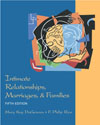There are many contraceptives available--vaginal spermicides, spermicidal,
and mechanical devices (or barrier methods). Non-device approaches also are
used, such as the fertility awareness method, coitus interruptus, or noncoital
stimulation. Some men and women opt for sterilization. All methods and approaches
have advantages and disadvantages; none is ideal. Some people decide on abortion,
over which there is a great deal of conflict based on five important considerations--legal,
physical and medical, moral, social and realistic, and psychological and personal.
About 15 percent of women have sought medical help to conceive. Surgical and
hormonal treatments help couples, as well as do various alternative means, such
as artificial insemination and in vitro fertilization. Adoption is an alternative
way to become a parent, but the availability of infants has been steadily declining.
Adoption practices vary in terms of openness of communication permitted among
adoptive parents, birth parents, and child. Contraception has increasingly enabled couples to make a choice about being
parents. Childlessness by choice and delayed parenthood are increasing as the
number of children desired is decreasing. Childless couples tend to be well
educated, urban, less traditional in gender roles, upwardly mobile, and professional.
Even though attitudes about having children are changing, couples still can
face considerable pressure from families and friends to have children. Planned
parenthood involves having children by choice, not by chance. |



 2002 McGraw-Hill Higher Education
2002 McGraw-Hill Higher Education